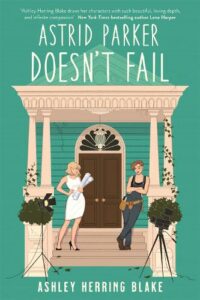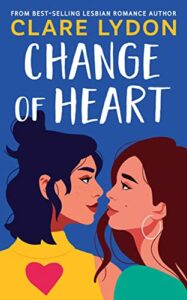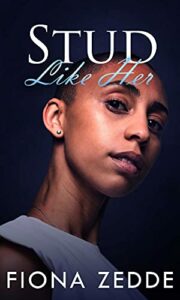Where are All the Butches in Lesbian Romance Novels?
Romance novels are a big deal. They’re what keep the lights on in the publishing industry, creating billions of dollars worth of profit every single year. And romance just keeps getting more popular. Out of every single genre, romance was the fastest-growing last year. More and more of those stories are sapphic. Whether it’s indie authors, small lesbian-run publishing houses like Ylva and Bella Books, or even traditional publishers pursuing the pink pound, there are more lesbian romances available than ever before. There’s just one problem: where are the butch women?

Though butches are a beloved part of our community, they’re massively underrepresented in lesbian romance. The overwhelming majority of lesbian romance novels feature two femmes. Femme4Femme relationships exist, and are worth being reflected in our stories. But they are not the only lesbian stories – far from it. And femmes aren’t the only members of our community who deserve to find themselves recognized on the page. Butch women are just as worthy of love. And sadly, in the printed word, it’s often missing.
Even books with butch-coded characters tend to soften their masculinity with make-up and jewelry, just like the L Word did with Shane. For example, Ashley Herring-Blake’s romcom Astrid Parker Doesn’t Fail. At first glance Astrid’s love interest, carpenter Jordan Blake, is a swoon-worthy butch. But her undercut and toolbelt are offset by lipstick and eyeliner. That wouldn’t be a bad thing in isolation – but it’s connected to a wider pattern of butch erasure.
 Though it’s a popular lesbian aesthetic, androgyny is also missing from lesbian romance novels. Anything outside the narrow box of femininity seems to be frowned upon. Take Clare Lydon’s Change of Heart. With smouldering chemistry, family secrets, and very British humour, it’s one of the best books I’ve read all year. There’s just one problem: the cover.
Though it’s a popular lesbian aesthetic, androgyny is also missing from lesbian romance novels. Anything outside the narrow box of femininity seems to be frowned upon. Take Clare Lydon’s Change of Heart. With smouldering chemistry, family secrets, and very British humour, it’s one of the best books I’ve read all year. There’s just one problem: the cover.
Erin, one of our leading ladies, is repeatedly described as having short hair. But instead of a close crop, the cover art shows Erin with hair flowing long past her shoulders. Erin on the cover is more conventionally feminine than Erin on the page. Would it really be so terrible to show a woman with short hair?
There are some exceptions among 2022’s releases. Fiona Zedde’s Stud Like Her is a sizzling Butch4Butch romance. Jae’s Wrong Number, Right Woman stars Denny, the sweetest plus-sized butch protagonist. Can’t Resist Her, by Kianna Alexander, is about a stud named Aiko and the femme who got away. Sadly, only one of these books – Stud Like Her – actually shows its lead on the cover. Technically Aiko appears too, but curls replace her meticulously barbered crop, and she’s wearing make-up and jewellery that are a world apart from how this character is described by the author.
If you were to look at the covers of the best-selling lesbian romance novels of the last five years, you’d come away with the impression that nearly every lesbian is feminine, white, and thin. Which doesn’t come close to reflecting the full, extraordinary spectrum of our community. Butches are all but invisible.
Examining of all the lesbian books that came out in 2022, a disturbing pattern becomes clear. There are more ghosts, monsters, and animals on the covers of lesfic novels than butch women. Hell, there are more buildings and monuments. Which sends a pretty terrible message.
It implies that butch women are undesirable, unworthy of a Happily Ever After. By erasing butches on the cover of romance novels, authors and publishers suggest that femininity is the only appealing face of lesbianism. And that is unacceptable.
I’m not saying this to put any particular author or publishing house on blast. I have a deep appreciation for what lesfic authors and lesbian publishers do to improve the representation of our community, and will continue to spend a sizeable chunk of every paycheck supporting their work. And I understand that covers are often defined by market expectations – for these stories to be commercially viable, they need to sell.
 It is a risk for indie authors and small publishers to put more butches on the covers of their books. Because butches are instantly recognisable as lesbian, presenting in a way that totally rejects heterosexist beauty standards and sticks a middle finger up at the male gaze. Books must appeal to as wide a range of readers as possible to sell, and femmes are less challenging, closer to mainstream ideals of what women should be. Feminine women are a safe bet.
It is a risk for indie authors and small publishers to put more butches on the covers of their books. Because butches are instantly recognisable as lesbian, presenting in a way that totally rejects heterosexist beauty standards and sticks a middle finger up at the male gaze. Books must appeal to as wide a range of readers as possible to sell, and femmes are less challenging, closer to mainstream ideals of what women should be. Feminine women are a safe bet.
But lesbian fiction has a long and proud history of embracing the unconventional; of showing women that there are alternative paths to the one society expects us to follow. Lesbian romance is important because it treat the way we love with dignity, affirming the worth of lesbian life. These books are a welcome and necessary refuge from the homophobia of mainstream representation, where – even in 2023 – lesbian characters are still being killed off at alarming rates. And the picture isn’t complete or whole unless it includes butch women.
I don’t know a single lesbian who would want to live in a world without butches. So why are the lesfic market intent on selling it to us? Let’s face it, lesbian life is all the sweeter for the quiet strength, swagger, and gallantry of butch women. Butches have a valued place in our hearts; our community. And butches should have a place in our fiction too.




